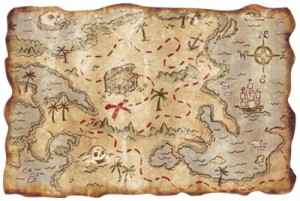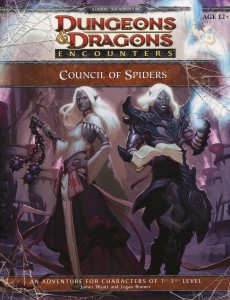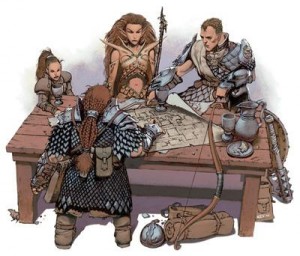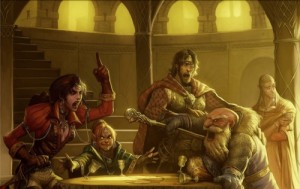 “Among the loot is a treasure map.”
“Among the loot is a treasure map.”
This statement never fails to get the players’ attention. Suddenly the magic sword and the rare gems are forgotten at the possibility of even greater riches. I’ve seen players expend more energy arguing over who gets the treasure map while other magical treasures on the floor right in front of them go unclaimed. The idea that someone hid something valuable and you could be the one to find it really hits a nerve with players. Why settle for this lame flaming sword +3 when I could have something even better? Ah, the insatiable greed of players.
Personally I love treasure maps. They’re one of the easiest and best adventure hooks in D&D (or just about any other RPG). The promise of something valuable, the excitement of following the map’s directions, and the thrill of acquiring treasure appeals to an overwhelming majority of players. Knowing this, it’s easy for the DM to lead the PCs anywhere he wants them to go, because who can resist a treasure map?
But a treasure map can and should be more than a map with a big X marked on it. It certainly can be this mundane and direct, but if it is then it’s a safe bet when the PCs get there they won’t find anything worthwhile. A good map has a story all its own, a history, a personality if you will. Someone went to a lot of trouble to hide their treasure and then write down the location. The last thing they wanted was for a bunch of idiots (the PCs) to easily find it and steal it just because they got their hands on his map.
Before throwing a treasure map haphazardly into your game you should answer the 5 Ws – who, what, when, where, why (although not necessarily in that order). It may seem like a lot of extra (and unnecessary) work, but believe me it’s time well spent.



